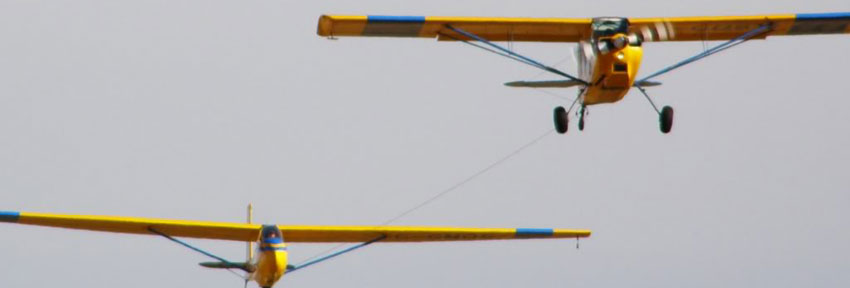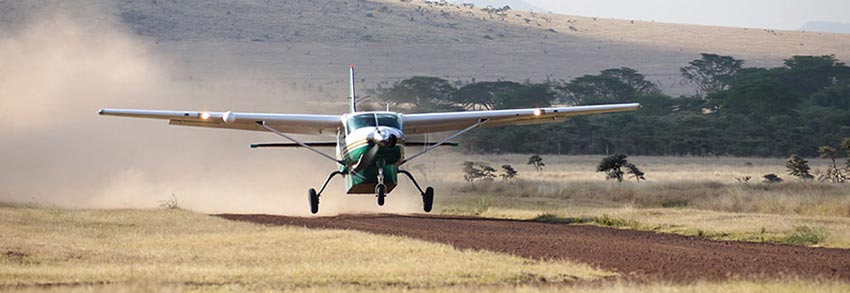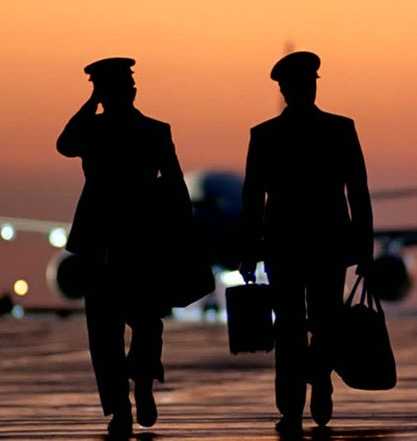It Can Be Difficult Landing Your First Pilot Job – But it Doesn’t Have to Be
The Employment Catch-22 – employers want you to have experience before they’ll hire you. But how do you gain experience when every entry level pilot job is requiring experience to be hired?
Pilot Jobs aren’t exempt from the employment catch-22. Even in markets where pilots are in demand it can be difficult for low hour pilots to get their foot in the door and start gaining the flight experience most pilot jobs require.
There are employers seeking low flight time pilots to fill their ranks. Listed below are types of employers looking for low hour pilots and ideas to maximize your earnings and career advancement.
Table of Contents
Entry Level Pilot Jobs
Pipeline and Powerline Patrol
Pipeline and Powerline patrol pilots fly low level across the country to monitor the the condition of gas or electric infrastructure. The federal government requires the lines to be inspected on a recurring basis.
Pilots are often hired by contractors rather than directly by the energy companies. Pilots will often get paid per mile patrolled, so there can be individual financial pressure to get the job done. Pipeline/Powerline patrol pilots can usually build flight experience fast compared to other entry level jobs.
A Day in the Life of Pipeline and Powerline Patrol Pilot
Pipeline and Powerline Patrol Requirements
- License Required: Commercial
- Ratings Required: Instrument and category and class appropriate to equipment being used
- Flight Experience Required: Low though often employers insurance requires more flight time
Aerial Photography
Aerial photography positions can involve carrying of professional photographers or the pilot doing the picture taking themselves. Some aerial photography operations have airplanes specially outfitted with advanced camera gear.
Aerial photography is often done by fixed base operators that hire pilots for other duties. So it will sometimes be one of the many positions a pilot will fill rather than a standalone job.
Aerial Photography Pilot Requirements
- License Required: Commercial
- Ratings Required: Category and class appropriate to equipment being used. Instrument rating can often be required by employers.
- Flight Experience Required: Low
Glider Tow Pilot
Glider tow pilots fly powered aircraft to pull gliders into the air. This is a common private pilot job which makes it difficult to find paid positions.

Glider Tow Pilot Requirements
- License Required: Private though Commercial to get paid
- Ratings Required: Category and class appropriate to equipment being used. Glider towing endorsement
- Flight Experience Required: Low
Banner Tow Pilot
Banner tow pilots fly low and slow over gatherings of people dragging messages (usually advertisements). Banner tow positions are more common near beaches. There are some positions available that allow pilots to build time fast, though this isn’t as common. Banner tow pilots will often work other pilot jobs as well.
- License Required: Commercial
- Ratings Required: Category and class appropriate to equipment being used. Banner towing endorsement
- Flight Experience Required: Low
Skydive Pilot Jobs
Skydiver pilots fly airplanes specially converted to carry skydivers to altitude for jumps. Skydive operations typically take place out of private airports.
Skydive operations are seasonal, with busy seasons depending on local weather. Northern skydive locations are usually closed in the winter. Southern locations are open but the loads/work is less during the off season.
Skydive pilots are usually paid per load carried and can build a lot of flight time quick during the jump seasons.
Flying for Skydiving Operations
Skydive Pilot Requirements
- License Required: Commercial
- Ratings Required: Category and class appropriate to equipment being used.
- Flight Experience Required: Low
Ferry Pilot Jobs
Ferry pilots move airplanes on behalf of owners or operators. Sometimes the owner is new to the airplane and does not have the experience needed to get the airplane to them. Sometimes an airplane ferry operation can be complicated – such as when flying through remote environments enroute to destinations or when converting short range airplanes to fly across large expanses of water or land.
Some ferry pilot jobs are available to new pilots. However, the more difficult ones are better suited to experienced pilots. Aircraft ferrying usually pays per ferry.
Ferry Pilot Job Requirements
- License Required: Commercial up to Airline Transport Pilot
- Ratings Required: Category and class appropriate to equipment being used. Instrument Rating
- Flight Experience Required: Potentially low, though sometimes time requirements can be high depending on the type of operation.
Part 135 Second In Command
Part 135 operations involve carrying either cargo or passengers for hire. These operations fall outside of what the FAA deem airline operations so have different operational requirements. Part 135 often involves advanced and high performance airplanes that require 2 pilot crew. Serving as a first officer in part 135 does not require an airline transport pilot rating.
Two pilot cargo airplanes are common in part 135 operations. Passenger charter is another common type of part 135 operation and can use corporate jets, turboprops, or smaller piston airplanes. Part 135 second in command pilots are usually paid a salary.
First Day As An Airline Pilot, Hawaii Style
- License Required: Commercial
- Ratings Required: Category and class appropriate to equipment being used. Instrument rating.
- Flight Experience Required: Low
Aerial Mapping/Survey Pilot
Aerial mapping and survey pilots fly airplanes converted to carry specialized equipment for either terrain modelling or large scale exploration for resources. Sometimes the equipment is complicated enough that it requires a specialized operator. Other times the equipment is automated enough for the plane to be operated by just a single pilot.
Survey pilots fly long flights and are expected to maintain a high level of flying accuracy. A subset of aerial surveying can also be to work with government agencies tracking wildlife for research purposes. Aerial survey pilots can build flight time quick. The jobs are usually salary or paid hourly by flight time.
Aerial Mapping/Survey Pilot Requirements
- License Required: Commercial
- Ratings Required: Category and class appropriate to equipment being used. Instrument rating.
- Flight Experience Required Low
Aerial Tour Pilot
Aerial tour pilots fly sightseeing passengers in scenic areas. These flights sometimes take place in more general commercial aviation rules. It is more common for aerial tour operations to fly under part 135 regulations. Time requirements are the same for these operations as they are with other part 135 operators. Some sightseeing aircraft have two pilots with the second in command position being available to low time pilots.
Tour flying is often seasonal with pilots usually being paid a salary or hourly per flight hour.
Read the story of an aerial tour pilot here.

Aerial Tour Pilot Requirements
- License Required: Commercial
- Ratings Required: Category and class appropriate to equipment being used. Instrument rating.
- Flight Experience Required: Low
Traffic Watch Pilot
Traffic reporting pilots usually work for television stations, radio stations, or traffic reporting companies. These positions are usually available in larger cities. Traffic watch pilots usually work swing shifts to cover normal traffic rush hour times. Traffic watch is more commonly done with helicopters though some fixed wing airplane positions are available. The position is usually paid hourly per flight hour.
Traffic Watch Pilot Job Requirements
- License Required: Commercial
- Ratings Required: Category and class appropriate to equipment being used. Instrument rating.
- Flight Experience Required: Low
Flight Instructor
Certified flight instructors teach people how to fly. They do this through a combination of teaching ground schools, one-on-one ground lessons with students, simulator training, and flight training. This is the most common job for new pilots and usually the positions with the most demand among entry level pilot jobs.
Time spent in an airplane is only part of the job for instructors. They don’t usually accumulate as quickly as other pilot jobs. Flight Instructor jobs are available at small operations where there might be only one instructor, all the way up to aviation universities where there can be 100s of instructors. Flight instructors are usually paid hourly for both time in the air and spent on the ground with students.
Learn More About Flight Instructor Jobs
Flight Instructor Job Requirements
- License Required: Commercial Pilot. Certified Flight Instructor
- Ratings Required: Category and class appropriate to equipment being used. Instrument rating. Instrument instructor or multi engine instructor are common add-ons though usually not required to get a job.
- Flight Experience Required: Low
Part 135 Pilot in Command Visual Flight Rules
As a subset of part 135 operations mentioned above there can be operations that are conducted in visual flight rules (VFR) only. These cannot operate on instrument flight plans nor in clouds. Flying as a part 135 VFR only pilot has lower initial experience requirements than instrument operations. These operations will usually be in smaller piston airplanes and are paid either salary or more commonly hourly per flight hour.
Common 135 visual jobs are Alaska Bush Pilots or backcountry flying like what is found in Idaho.

Part 135 Pilot in Command Visual Flight Rules Requirements
- License Required: Commercial
- Ratings Required: Category and class appropriate to equipment being used. Instrument rating.
- Flight Experience Required: At least 500 hours
New Employer Based Time Building Programs – apprentice style or ab initio
Some pilot employers are beginning to work out plans for apprentice style positions as a means of addressing the deepening pilot shortage. Most of the details of these positions aren’t available yet. However, employers will seek to get pilots at the very beginning of their pilot careers and may work out programs to get involved during initial pilot training.
Time Building Program Requirements
- License Required: Potentially private pilots or new commercial pilots
- Flight Experience Required: Low
How to Find Entry Level Pilot Jobs
A well rounded pilot job search plan should include multiple sources and types of employment job listings. At least one of the options should present and overview of available positions with compensation shown for the job seeker to compare and get an idea of job availability.
A good approach is to start with a broad view of pilot job listings and then narrow in on specific opportunities where appropriate. If you have an eye on a specific employer you should keep close tabs on that employer’s job opportunities via their website or by contacting that employer directly.
It is a good practice to always keep a big picture view of the pilot job market using employment systems that provide a complete picture. It is also a good idea to be open to competing job offers if they meet your needs and goals. Focusing in on one specific employer will limit your career potential.
Frequently Asked Questions About Entry Level Pilot Jobs
- How much do entry level pilots make?
- Entry level pilot pay is as varied as the positions available. Some jobs will be paid hourly while others have a salary. Employer provided benefits aren’t as common for new pilots compared to what will be available as they advance through the career. Pilots can typically expect to make between $22,000 per year to about $45,000 per year when they first start.
- What private pilot jobs are available?
- Private pilots cannot be legally paid to fly. However, non-paid flying opportunities exist for private pilots such as glider towing. It is a good networking practice for private pilots working into the career to work in a line position job at a local flight school or fixed base operator while they are completing flight training.
- Do I need a multi-engine rating for an entry level pilot job?
- A multi-engine rating is necessary for some low time pilot jobs but not all. If an employer has single engine airplanes in their fleet they will likely consider new pilots without multi-engine ratings. Additionally, some employers may be willing to hire new pilots into single-engine airplanes they operate and then help them obtain a multi-engine rating.
- Are low hour pilots in demand?
- Yes. All levels of commercial pilots are in demand right now. Entry level pilot positions across the country are left unfilled right now as employers are scrambling to fill positions. This is particularly pronounced at large flight schools seeking flight instructors.
- Where do I find low hour pilot job listings?
- Traditional jobs boards are available for entry level pilot job listings. However, many of these can be filled with outdated or inaccurate information. Make sure and research jobs boards before signing up. A new method of finding a pilot job is available that allows applicants to fill out one free profile to then have employers come to and compete for you.
- Do I need a college degree for an entry level pilot job?
- College degrees are usually required to work as an airline pilot, for the larger cargo operators, or for higher paying corporate jet operations. But most low hour pilot jobs do not require a college degree.
- Do pilot employers have internship programs for new pilots?
- Some pilot employers are beginning to get creative with bridge programs to help low time pilots into their ranks. Many of these employers have internship-style programs to help new pilots get exposure to flying and in some cases to help pilots get needed flight experience to meet minimum legal qualifications for a pilot position.
- Do entry level pilots get employment benefits?
- Employment benefits such as health insurance, paid time off, and retirement plans are common for pilot jobs. However, benefits are not as readily available for low hour pilots. Employment benefits are more commonly found at larger operations.
Greg started his professional pilot journey in 2002 after graduating from Embry Riddle. Since that time he has accumulated over 8,000 hours working as a pilot. Greg’s professional experience includes flight instructing, animal tracking, backcountry flying, forest firefighting, passenger charter, part 135 cargo, flying for a regional airline, a national low cost airline, a legacy airline, and also working as a manager in charge of Part 135 and Part 121 training programs.



